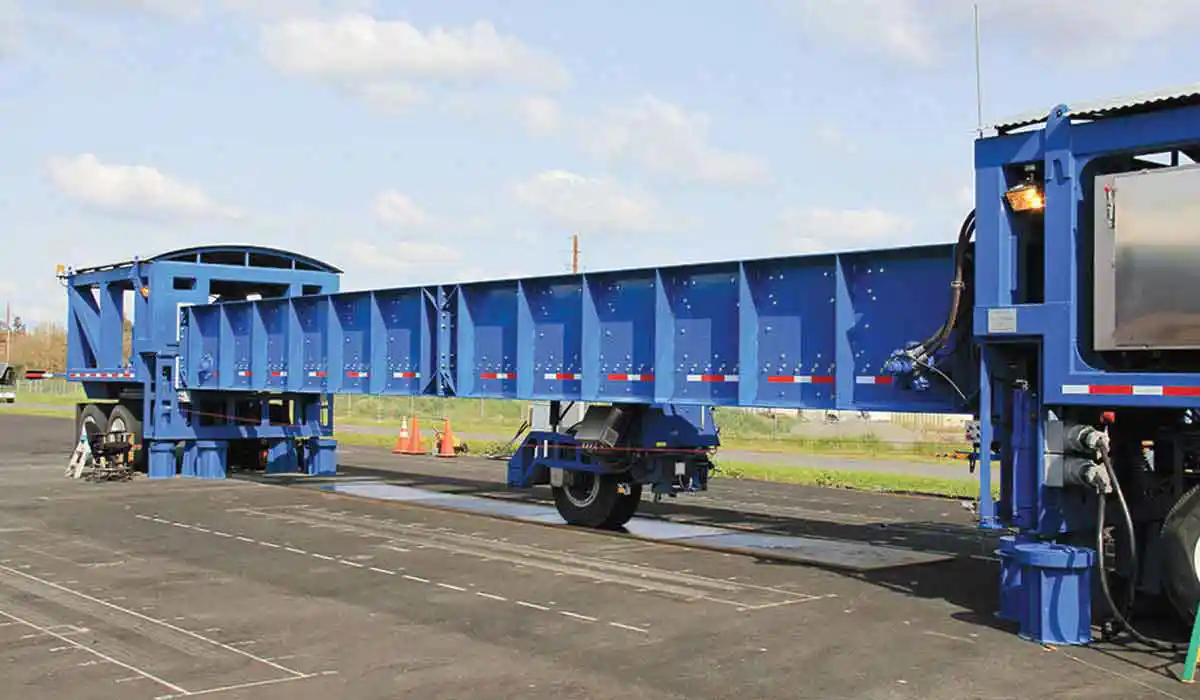Accelerated Pavement Testing
M. N. Nagabhushana, Senior Principal Scientist, CRRI, New Delhi

Flexible Pavements
The Indian road network is mainly built with flexible pavements, because of ease of construction and low initial cost as compared to concrete pavements. The flexible pavements are designed as per Indian Roads Congress (IRC-37) method and constructed as per Ministry of Road Transport and Highways (MoRTH) specifications. The design of flexible pavement is mainly affected by sub-grade soil, component material characteristics, design wheel load, climatic and environmental condition. The pavement is designed for a standard axle load of 8.16 t and higher loads are expressed as Equivalent Single Axle Load.
The top layer of the flexible pavements (bituminous mixes) is time, temperature and stress dependent materials and exhibits elastic, plastic or visco-elastic response when subjected to repeated loading. The inherent elastic properties of bituminous mixes are represented by stiffness modulus and Poisson’s ratio because they do not contribute to permanent deformation, whereas plastic properties contribute to permanent deformation under cumulative repeated loading. Factors such as vehicle speed, contact time and contact pressure influence rutting and are represented directly in the creep rate model, whereas temperature, characteristics of bituminous mixture and construction quality are represented in the constant values. Shear resistance properties of bituminous mixes need to be properly addressed for limiting rutting. Most of the pavement structural design practices including IRC mainly focus on protecting the sub-grade by excessive vertical strain and shear resistance of the bituminous layers are left to mix designers. Adequacy of shear resistance in bituminous mixture is commonly assessed with empirical methods, such as Marshall Stability.
Pavement Failure Mechanism
Many a times, the road network fails to perform well because of the bad conditions due to pavement distress (figure 1). Two basic types of distress in flexible pavement are considered; cracking and rutting, for classifying the failure. While repeated heavy loading condition is the primary factor for these distresses, cracking can be attributed to a poor fatigue resistant bituminous mix and rutting for improper mix design and/or use of softer, inappropriate grade of bituminous binder. Cracks open up the surface allowing further degradation by breaking-up of layer and allowing entry of water to all layers. The rutting is the longitudinal depression in the wheel path and is the permanent deformation in one or more layers in the pavement structure.

Flexible Pavements
The Indian road network is mainly built with flexible pavements, because of ease of construction and low initial cost as compared to concrete pavements. The flexible pavements are designed as per Indian Roads Congress (IRC-37) method and constructed as per Ministry of Road Transport and Highways (MoRTH) specifications. The design of flexible pavement is mainly affected by sub-grade soil, component material characteristics, design wheel load, climatic and environmental condition. The pavement is designed for a standard axle load of 8.16 t and higher loads are expressed as Equivalent Single Axle Load.
The top layer of the flexible pavements (bituminous mixes) is time, temperature and stress dependent materials and exhibits elastic, plastic or visco-elastic response when subjected to repeated loading. The inherent elastic properties of bituminous mixes are represented by stiffness modulus and Poisson’s ratio because they do not contribute to permanent deformation, whereas plastic properties contribute to permanent deformation under cumulative repeated loading. Factors such as vehicle speed, contact time and contact pressure influence rutting and are represented directly in the creep rate model, whereas temperature, characteristics of bituminous mixture and construction quality are represented in the constant values. Shear resistance properties of bituminous mixes need to be properly addressed for limiting rutting. Most of the pavement structural design practices including IRC mainly focus on protecting the sub-grade by excessive vertical strain and shear resistance of the bituminous layers are left to mix designers. Adequacy of shear resistance in bituminous mixture is commonly assessed with empirical methods, such as Marshall Stability.
Pavement Failure Mechanism
Many a times, the road network fails to perform well because of the bad conditions due to pavement distress (figure 1). Two basic types of distress in flexible pavement are considered; cracking and rutting, for classifying the failure. While repeated heavy loading condition is the primary factor for these distresses, cracking can be attributed to a poor fatigue resistant bituminous mix and rutting for improper mix design and/or use of softer, inappropriate grade of bituminous binder. Cracks open up the surface allowing further degradation by breaking-up of layer and allowing entry of water to all layers. The rutting is the longitudinal depression in the wheel path and is the permanent deformation in one or more layers in the pavement structure.
This is a premium article available exclusively for our subscribers.
If you are already a subscriber, please Login
If not, subscribe now and get access to well researched articles & reports on infrastructure construction, equipment & machinery, innovations & technology, project reports, case studies, and more. All this by simply paying just ₹200/- for a month of complete portal access, or a discounted rate of ₹1000/- for a full year of access.













